
During the "Thien" performance, from all directions, the sounds of nature rushed in through the sound of drums reverberating deep into the earth, the sound of horns echoing in the mountains, the sound of water mixed with the long, silent Pao Dung chant. The sacredness of the prayers created a space filled with inspiration, where people conversed with heaven and earth using the language of faith.
Musician Pham Cong - who is in charge of all the music of "Thieng" shared that the music in the show makes the audience feel like they can hear the sound of the forest, the stream and the breath of life and beliefs of the Red Dao people, blending with the breath of Sa Pa.
On that stage, the artisans and Red Dao people along with the professional actors brought a lively cultural sound through every step, dance, and song.

The stage lighting changes color to match the rhythm of nature: warm earthy brown in the scene "Finding land, establishing a village"; faint blue in "Praying for rain"; fiery red in "Sacred kitchen"... and pure white light when 12 high-level lamps light up in the mist of Sa Pa. The worship paintings, the symbolic red patches, the indigenous lines are enhanced by light... all like the breath of the mountains and forests transformed into art.
Scriptwriter Ha Van Thang shared: "We let the Dao people tell their own stories. When they sing Pao Dung, perform the coming-of-age ceremony or practice their cultural features on stage, they are living in the culture." To do that, director Dang Xuan Truong and his crew worked tirelessly for months with the Dao people in Sa Pa. Every scene, every movement was checked by artisans who understand the customs, so that every detail is authentic and soulful.
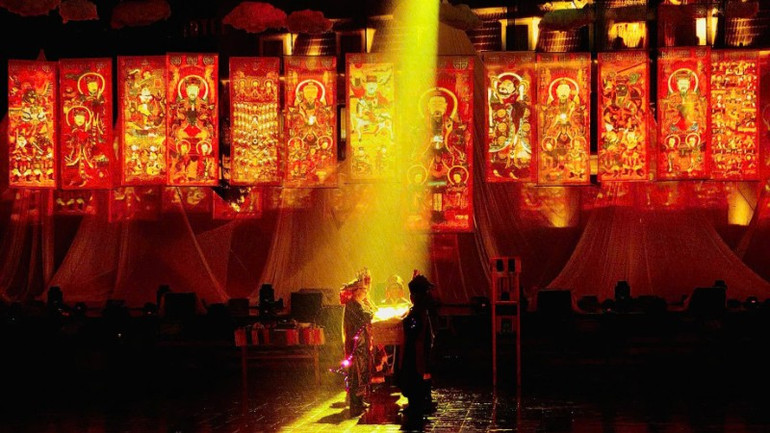
Mr. Chao Lao Ta, who directly participated in the play, recalled: "What I appreciate most is that Mr. Truong always respects identity. He asked for the opinion of each ordination master and each villager. Thieng is a stage, but it is very close to the real ceremony, not distorted." He believes that, for today's Dao youth, the performance is both an art program and a lesson to return to the roots. "Many young people now follow a modern lifestyle, forgetting their culture. When we see the ordination ceremony being honored, we feel proud and want to preserve it more than ever," he said.
The combination of contemporary theatrical language and traditional ritual creates a rare performance space: where 3D mapping technology, smoke effects, lasers, and lighting combine harmoniously with the dance, costumes, lyrics, and consciousness of the Red Dao people. When the light swirls in the white smoke, the image of a dragon appears, spraying water to make rain; when the altar burns in the middle of the stage; when the sound of a horn echoes from deep in the night… the whole space seems to be covered in a sacred ritual.
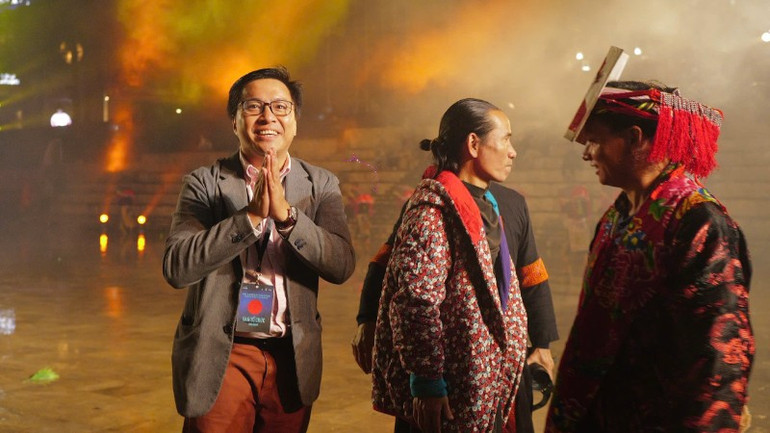
Artist Thu Ha ( Hanoi ) emotionally shared: "I have been to Sa Pa many times, but this is the first time a program has moved me so much. It feels like I am attending real, very sacred ceremonies. That makes me want to learn more about the culture of ethnic minorities." Many foreign tourists - who bought tickets for the show - even expressed that they did not need a refund, because "the show was so worth the experience".
After the performance, when the Dao people came to shake hands and say thank you, when the foreign guests stayed to share their experiences. For May Nhi, a Dao girl participating in the play, that feeling was even deeper. "I have never seen my cap sac ceremony so sacred and beautiful," she said. In "Thien", May Nhi and the other women in the commune participated in the 12-lamp cap sac part and the ending.
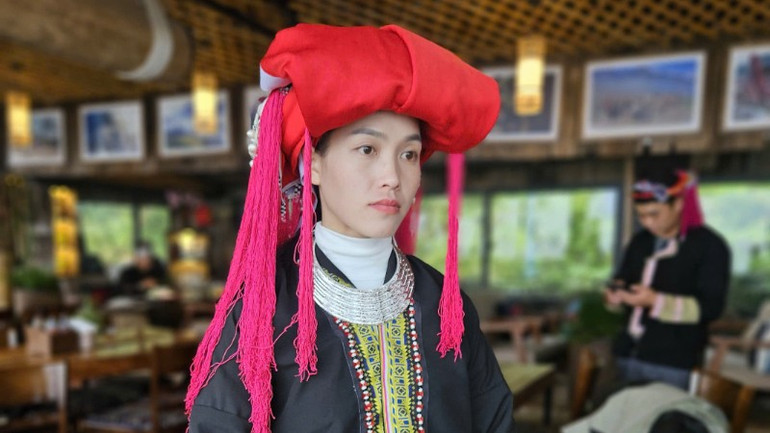
They practiced for 4 or 5 days in the village, then went to the stage to join the shamans and artists. As a Dao woman, it is rare to see the initiation ceremony up close, so the feeling at that moment was truly overwhelming. For Chao Lao Ta, a young Red Dao man who had received the 3-lamp initiation, "Thieng" was a very special experience.
"I am a native Dao. For many years now, I have seen Dao culture gradually disappearing. Young people do not fully understand its beauty, so they easily ignore it or consider it a nuisance. The performance helps us look back and be more proud of our heritage," he shared.

Amidst the cold rain, locals, tourists and artists still seem to have not left the magical world of light, music and the echoing Pao Dung lyrics. On the mountain town, the story of Sa Pa’s first performance is becoming the most talked about topic. If in the past, Sa Pa was known for its majestic natural beauty and cultural identity, now the series of art events has added a new color to that picture.
Performing arts serving tourism, created from the very material of community life, are authentic cultural tourism products, crystallizing the creativity of artists and the pride of ethnic minorities in the highlands. With serious investment and love for local culture, "Thien" has become the pride of Sa Pa, at the same time shaping a new direction for cultural tourism connecting the community.
Source: https://nhandan.vn/dong-bao-dao-do-tai-sa-pa-ngo-ngang-xuc-dong-voi-dem-dien-thieng-post921667.html




![[Photo] Cutting hills to make way for people to travel on route 14E that suffered landslides](https://vphoto.vietnam.vn/thumb/1200x675/vietnam/resource/IMAGE/2025/11/08/1762599969318_ndo_br_thiet-ke-chua-co-ten-2025-11-08t154639923-png.webp)





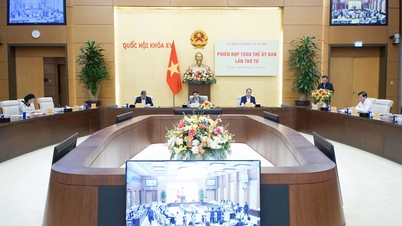



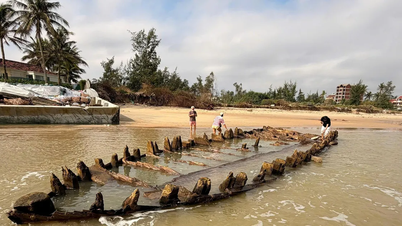



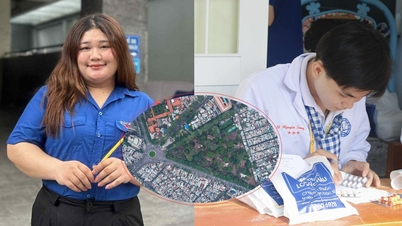







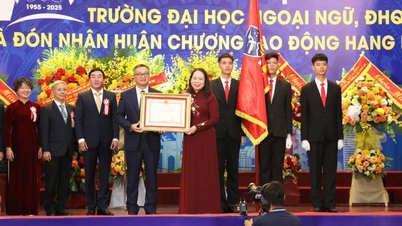


![[Photo] Cutting hills to make way for people to travel on route 14E that suffered landslides](https://vphoto.vietnam.vn/thumb/402x226/vietnam/resource/IMAGE/2025/11/08/1762599969318_ndo_br_thiet-ke-chua-co-ten-2025-11-08t154639923-png.webp)
![[Photo] "Ship graveyard" on Xuan Dai Bay](https://vphoto.vietnam.vn/thumb/1200x675/vietnam/resource/IMAGE/2025/11/08/1762577162805_ndo_br_tb5-jpg.webp)







![[Video] Hue Monuments reopen to welcome visitors](https://vphoto.vietnam.vn/thumb/402x226/vietnam/resource/IMAGE/2025/11/05/1762301089171_dung01-05-43-09still013-jpg.webp)














































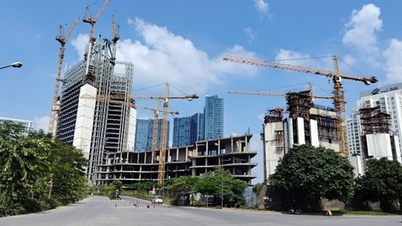

















Comment (0)